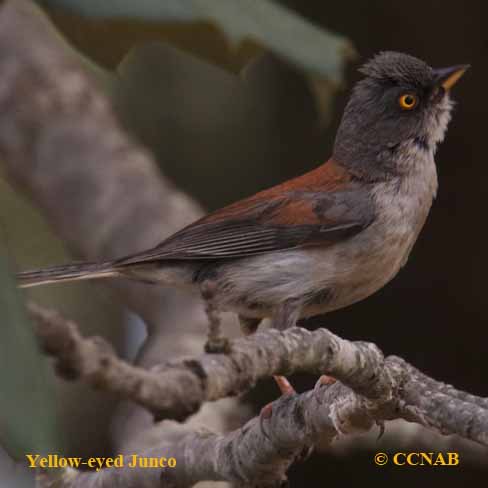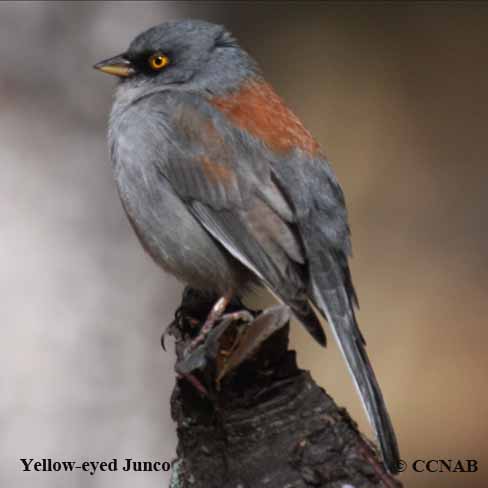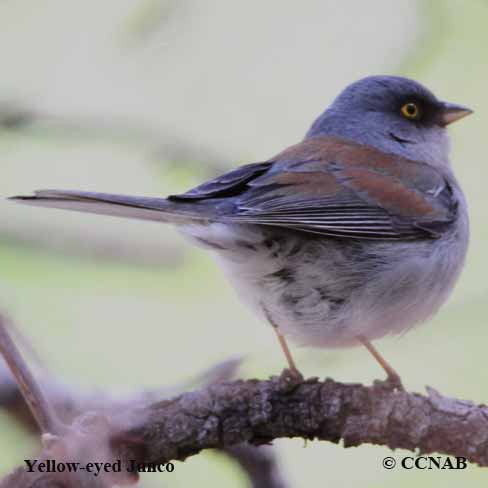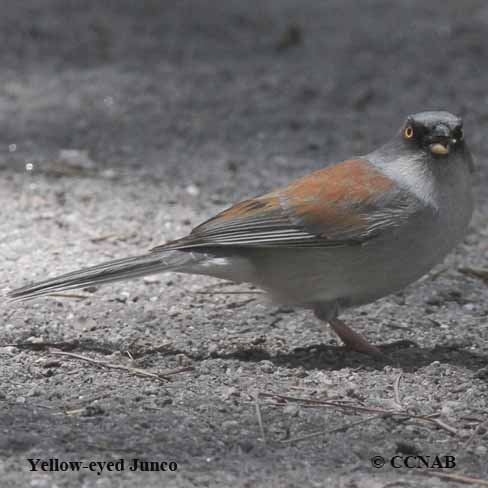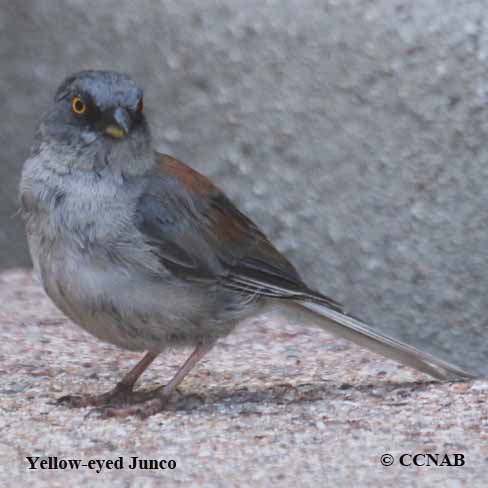North American Bird Search Box
This search box can be used to find bird species using bird's english, french or latin name, or to identify bird by its 4 letter Alpha Code
Field Guide for all the Birds of North America
Yellow-eyed Junco
4 Letter (english names) Alpha Code: YEJU (2)
Junco aux yeux jaunes
Junco phaeonotus
Information, images and range maps on over 1,000 birds of North America, including sub-species, vagrants, introduced birds and possibilities
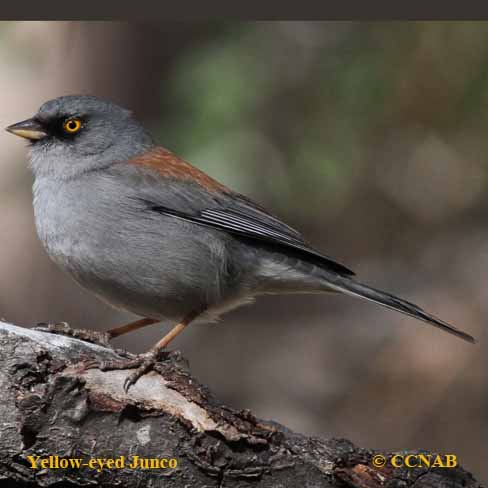
Life, Habitat & Pictures of North American Juncos
| B L | W W | W | Family | Latin Name |
|---|---|---|---|---|
| 6.25" 15.8cm | 10" 25.4cm | 0.7 oz 20g | Passerellidae | Junco phaeonotus |
North American Bird Calls
- Click here
- Click here
- Summer
- Year Around
- Winter
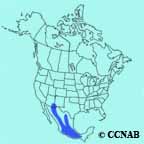
Yellow-eyed Junco is also known as the Mexican Junco. This junco is easily identified, by its bright yellow eyes, which are quite noticeable. It is a forest bird, that prefers conifers and is commonly seen in park areas. They are very friendly, and are accustomed to people.
Reference to Other Bird Site:
ABA - American Birding Association This site represents an organization that maintains official records of all birds species that have been proven to have been seen inside the perimeters of the North American Continent and the surrounding bodies of water. Regular revised versions are posted to keep the bird list current at all times. This is the list used by all serious birders over their lifetime. You may be aware of the movie called the "Big Year". It was with this list that all the competing birders used in an attempt to set a new record as to how many bird species that could be seen by an individual birder in one calendar year.
